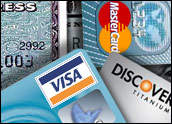
Imagine walking into your local supermarket as you normally would. You fill your shopping cart with groceries, and when you get to the checkout line, you see hundreds of abandoned carts loaded with items, strewn haphazardly about, but with no shoppers to be found. Was there a fire? Natural disaster?
In a brick-and-mortar supermarket, only a catastrophe could cause such an odd sight, but online it is par for the course. The majority of people who take the time to load a shopping cart never make it through the checkout line; the industry average projects a staggering 60 percent figure of abandoned shopping carts.
Why don’t these people pay? Why would somebody go through the effort and maneuvers of shopping without actually following through? Quite often it comes down to price or, moreover, willingness to pay. There is a lull between loading a shopping cart and actually paying that allows a pajama-clad online shopper plenty of time to pontificate the merits of the would-be purchase, look for a better price or simply get distracted and lose interest.
A Good Place to Start
There are many ways to increase successfully completed checkouts, but perhaps the most important one is to try to augment the consumer’s willingness to pay. Adding alternative payments is a good place to start because it’s not too difficult to see that increasing payment options can potentially rope in more potential shoppers.
If your wallet only contains an American Express card and a US$20 bill, and you stumble across a restaurant that is selling $30 meals and only accepts Visa and MasterCard, chances are you will continue your stumbling until you find an establishment that accepts your money in a form you presently have available. Likewise, the PayPal effect is real; somebody who just sold an antique doll on eBay via PayPal might have $200 sitting in a PayPal account, willing to use that balance on a somewhat cavalier purchase. It’s almost like money found under a couch cushion, subject to less stringent purchasing criteria than money earned from a paycheck, and therefore increases the consumer’s willingness to pay.
There are other ways that alternative payments can help. Sometimes a consumer’s willingness to pay will be diminished by the lack of trust in an unknown merchant, which is something that reputable alternative payments like PayPal and Google Checkout can help offset. BillMeLater, likewise, might attract consumers who are hesitant about placing a large purchase on a debit or credit card. Other payment types simplify the experience and reduce the amount of friction in a checkout — call it the solution to the “my wallet is downstairs and I’m upstairs” effect that brings so many checkouts to a grinding, permanent halt.
Another Problem
Unfortunately, there’s another — much bigger — problem: Sometimes people want an item but they just don’t want to pay for it — or at least what you’re charging for it — no matter what form of payment is accepted, whether it be credit card, cash, check, PayPal, BillMeLater, Google Checkout, gold ingots, etc. Traditional payments and most alternative payments don’t really solve this problem, because they simply shift the tender type around without really overcoming the consumer’s fundamental resistance.
Shoppers are bizarre creatures. The same person who might agonize over whether to buy the $8 or the $9 pair of socks might drop $200 — without so much as an afterthought — on a bottle of wine, spend $120 per month on car insurance without even looking for a lower quote, or cough up anything to get the latest trend in denim. People have different price sensitivities for different products at different times.
It turns out that a terrible customer for one merchant might be a great customer for another merchant. The same person who abandons your shopping cart might be the best customer in the world — come Valentine’s Day — for FTD, or a terrific shopper at Gap, or an ideal Geico policy holder, or a lifelong Blockbuster member. These companies, in turn, will pay a lot of money to acquire a new customer.
Alternative Payments
What if you could offer your customers your products for free if they bought flowers, signed up for a premier wine club or switched insurance carriers — things that they apparently want to do anyway? It turns out that you could get paid as if customers purchased from you directly, fundamentally changing the whole nature and numbers of the conversion game for “bad” customers.
This is where alternative payment companies like TrialPay, Webloyalty and Affinion help. TrialPay is a different kind of alternative payment, a conversion tool for the large numbers of customers who ordinarily would not pay. Just as BillMeLater can help convert a customer who might not have enough cash to make a purchase, TrialPay helps convert customers who wouldn’t normally purchase — period — by allowing those customers to “pay” when they transact with a trusted partner for which they have a high willingness to pay, like Geico, FTD, Blockbuster, etc. The Geicos and Blockbusters pay TrialPay for the customer acquisition, which covers the cost of the product or discount you give away to the customer.
The concept is not too far removed from Amazon’s “Get $30 Off When you Sign Up for an Amazon.com Visa Card” promotion that Amazon shows in every U.S. checkout — the key differences being that not everybody wants a credit card, and offering other services might prove more lucrative to the merchant and compelling to the consumer.
Significant Revenue Possibilities
This concept can be used in so many more places. If a customer closes the browser window on the shopping cart page, you can show them a message offering them a discount funded by a blue-chip advertiser. If a customer is looking up shipping prices, you might be dealing with a frugal customer more likely to abandon their shopping cart.
Customers who haven’t come back to shop with you in months or years are buying other things elsewhere. You can win them back by offering them discounts when they transact with your partners. This yields you — as a merchant — incremental revenue, but also recaptures your customers’ attention.
When you truly increase a consumer’s willingness to pay, the revenue possibilities are significant simply because the vast majority of your visitors probably never engage in a transaction on your site. An intelligent and thorough implementation of relevant alternative payment options can slowly but surely chip away at a consumer’s reluctance to pay you and make a lasting effect on your business.
Alex Rampell is cofounder and CEO of the online payments firm TrialPay.















































Social Media
See all Social Media